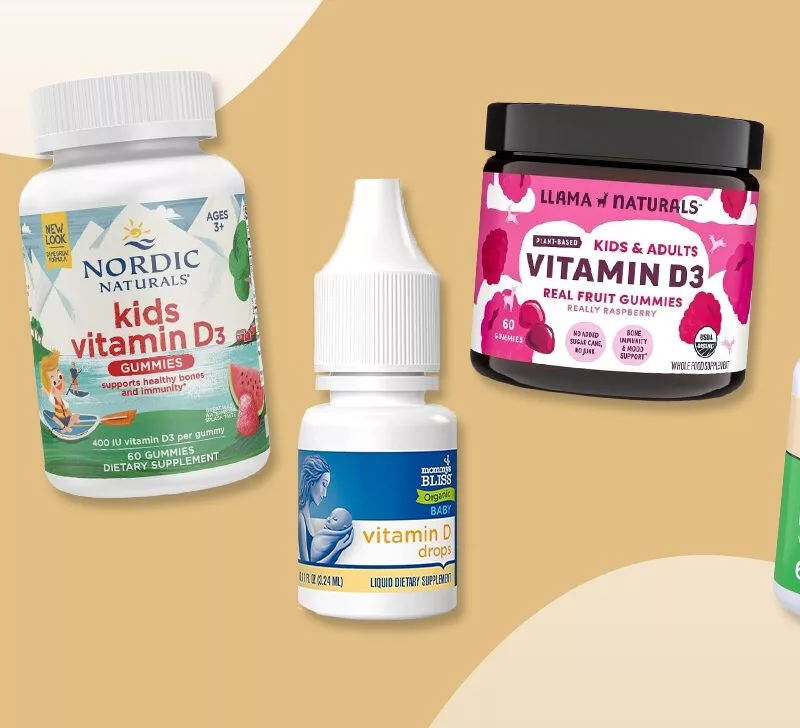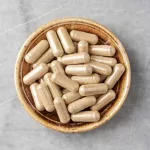Hey there! If you’ve ever worried that your little one isn’t getting enough sunshine (or that the backyard isn’t sunny enough), you’re not alone. Vitamin D is the “sunshine vitamin,” and it plays a starring role in strong bones, a resilient immune system, and even mood regulation. The good news? A high‑quality supplement can safely fill any gaps left by diet and daylight. Below you’ll find everything you need to pick the perfect children vitamin D supplement – from daily dosages to the tastiest gummy options – all reviewed by a registered dietitian.
Why Vitamin D Matters
Key health benefits
Vitamin D isn’t just a “bone vitamin.” It helps your child:
- Absorb calcium and phosphorus for sturdy bones and teeth.
- Keep the immune system on alert, reducing the frequency of colds and flu.
- Maintain healthy mood and brain development – think of it as a quiet mood‑balancer.
Risks of deficiency
When the body lacks vitamin D, you may notice:
- Rickets or delayed bone growth in severe cases.
- Frequent infections, especially during winter.
- Feelings of irritability or low energy.
Potential downsides of excess
Too much vitamin D can cause hypercalcemia (high blood calcium), leading to nausea, vomiting, or kidney stones. That’s why staying within the recommended vitamin D dosage kids guidelines is crucial.
How Much Needed
Recommended daily allowance
The American Academy of Pediatrics (AAP) and the National Institutes of Health (NIH) agree on these age‑specific targets:
| Age | Recommended IU/day | Typical supplement dose | When to consider a higher dose |
|---|---|---|---|
| 0‑12 months | 400 IU | 100 IU × 4 drops (e.g., Kids Ddrops® Booster) | Exclusive breastfeeding, low sun exposure |
| 1‑3 years | 600 IU | 1 gummy × 600 IU (Rainbow Light Sunny Gummies) | Dark skin, indoor lifestyle |
| 4‑8 years | 600 IU | 1 gummy × 400‑600 IU (Nordic Naturals) | Limited outdoor play |
| 9‑18 years | 600‑1000 IU | 1‑2 gummies × 400‑1000 IU (Hero Nutritionals) | High‑performance sports, teen growth spurts |
Factors that shift the requirement
Skin tone, latitude, season, and even diet influence how much vitamin D your child actually absorbs. Darker‑skinned kids synthesize less vitamin D from the same amount of sunlight, and children who spend most of their day indoors (think remote school days) often need a bit more from a supplement.
Supplement Types
Liquid drops
Perfect for infants and toddlers who can’t chew. A few drops provide a precise dose with almost no taste. Brands like Kids Ddrops® Booster deliver 600 IU per 4‑drop serving and are free of common allergens.
Chewable tablets / softgels
These work well for older kids who can swallow pills. They often pack a higher IU per unit, which is handy for adolescents with bigger vitamin D needs.
Gummies – the crowd‑pleaser
If you’ve ever seen a child’s eyes light up at the sight of a gummy bottle, you know why gummies dominate the market. They’re tasty, easy to dose, and usually gelatin‑free, which helps families with vegetarian or allergy concerns.
Top gummy brands – side‑by‑side comparison
| Brand & Product | IU per gummy | Flavor | Gelatin‑free? | Allergen profile | Price (60‑count) | Third‑party testing |
|---|---|---|---|---|---|---|
| Nordic Naturals Kids D3 Gummies | 400 IU | Wild watermelon splash | ✔️ | Gluten‑free, dairy‑free | $24 ≈ $0.40/IU | ✔️ (non‑GMO, purity) |
| Rainbow Light Kids Sunny Gummies | 1,000 IU | Mango/Peach/Strawberry | ✔️ (pectin) | Gluten‑free, dairy‑free | $28 ≈ $0.028/IU | ✔️ (IGEN‑non‑GMO) |
| L’il Critters Vitamin D3 Gummy Bears | 400 IU | Berry blend | ✔️ | Gluten‑free | $22 ≈ $0.055/IU | ✔️ (third‑party) |
| Hero Nutritionals Vitamin D3 Gummies | 1,200 IU (2 gummies) | Tropical orange | ✔️ (vegetarian) | Gluten‑free, dairy‑free | $16 ≈ $0.013/IU | ✔️ (NSF certified) |
| Kids Ddrops Booster (liquid) | 600 IU / 4 drops | Neutral | — | No common allergens | $18 ≈ $0.030/IU | ✔️ (NSF, Mom’s Choice) |
Notice how the price‑per‑IU varies dramatically? If budget is a big factor, Hero Nutritionals offers the cheapest IU count, while Nordic Naturals gives a clean, gelatin‑free formula with a familiar flavor.
Choosing the Right Supplement
Ingredient purity
Look for non‑GMO seals, third‑party Certificates of Analysis, and a short ingredient list. Avoid artificial colors, sweeteners, and unnecessary fillers – kids don’t need extra junk.
Flavor and texture
Kids are picky. In my own house, my 4‑year‑old refuses any gummy that isn’t fruit‑flavored, while his 2‑year‑old sister will only take a liquid drop. Having both options on hand can save you a lot of morning battles.
Allergy considerations
Gelatin‑based gummies can be problematic for vegetarian families or those allergic to pork. Pectin‑based gummies (like Rainbow Light) or oil‑based drops (Ddrops) sidestep this issue.
Cost‑per‑IU analysis
When you calculate cost per IU, you see the real value. A gummy that looks cheap per bottle may actually be more expensive per unit of vitamin D, especially if the IU per serving is low.
Quick FAQ
Can my child take two gummies a day? Only if the total IU stays within the age‑specific limit. For example, a 400 IU gummy is fine for a 5‑year‑old, but two would push them to 800 IU—above the recommended 600 IU.
Do I need a doctor’s order? In most cases, no. However, if your child has a medical condition or is on other medications, a quick chat with the pediatrician is wise.
Dietitian Advice
Pair vitamin D with healthy fats
Vitamin D is fat‑soluble, meaning it’s best absorbed when taken with a small amount of dietary fat. A spoonful of full‑fat yogurt, a slice of cheese, or the oil in the supplement itself (like Ddrops’ coconut oil base) does the trick.
When to test serum levels
Testing isn’t required for every child, but the NIH Office of Dietary Supplements suggests a blood test if:
- Your child has risk factors (dark skin, limited sun, chronic illness).
- They’ve been on a high‑dose supplement for several months.
- You’re unsure whether the current regimen meets needs.
Real‑world case study
Maria, a mom from Seattle, switched her 18‑month‑old from a 400 IU gummy to the liquid Ddrops Booster (600 IU) during the gray winter months. Within six weeks, she reported fewer sniffles and a calmer bedtime routine. While anecdotal, it illustrates how matching the right dosage to lifestyle can make a noticeable difference.
Bottom Line
Choosing the best vitamin D supplements kids need isn’t about the flashiest package—it’s about matching the right dose, flavor, and safety profile to your child’s age and habits. For most families, a reputable gelatin‑free gummy like Nordic Naturals (400 IU) or Rainbow Light (1,000 IU) offers an easy, enjoyable way to hit the recommended intake. If your toddler can’t chew, the liquid drops from Kids Ddrops give you precise dosing without any allergens.
Remember to:
- Check the label for third‑party testing and minimal additives.
- Consider your child’s diet, skin tone, and outdoor exposure when picking a dose.
- Pair the supplement with a little healthy fat for optimal absorption.
- Talk with your pediatrician or a registered dietitian if you have any concerns.
We’ve walked through benefits, dosage charts, product comparisons, and expert tips—all in a friendly chat. I hope you feel confident selecting a vitamin D supplement that your child will actually enjoy. Got a favorite brand or a funny gummy‑moment to share? Drop a comment below; I love hearing real‑life stories from fellow parents!


















Leave a Reply
You must be logged in to post a comment.